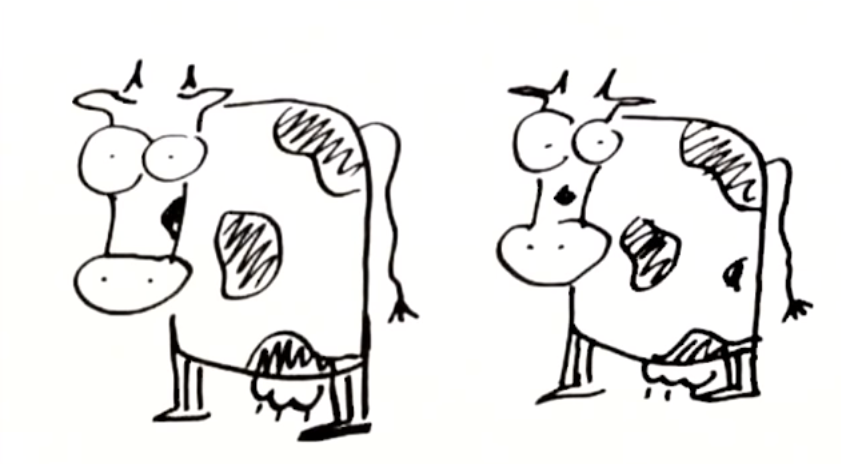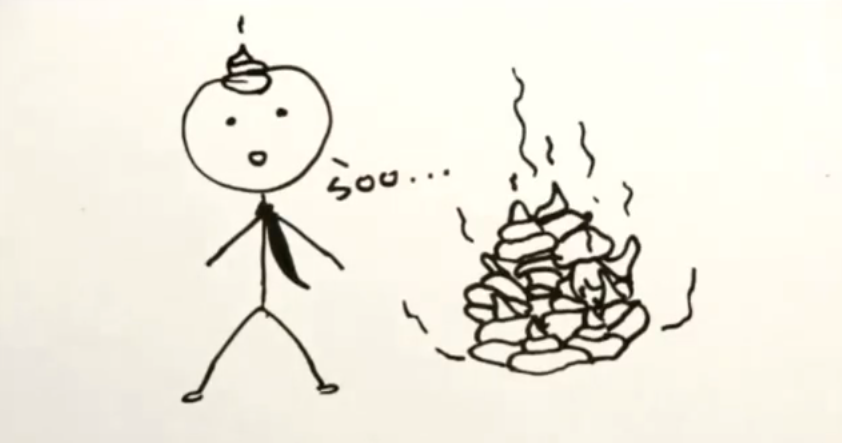We here at the Green Society Campaign got a nice late January surprise when we had a video featured on Upworthy. The video centered around factory farming, and therefore a couple thousand new views were bound to lead to some push back. Late last week that push back came in the form of a comment left by the Peterson Family Farm Bros. The author was generally congenial and seemed actively interested in getting to the truth, and therefore I provided a full cited response to his points. However, since ‘don’t read the comments’ is usually a strong mantra to follow when on Youtube I wanted to post my response here so more people can read it and because it allows for improved formatting.
The Peterson Family Farm Bros, comment appears broken up in italics below with my response to that specific portion following each thought.
Okay, I know you meant well by this video, but there is just a lot of info you didn’t get straight here at all. Our farm is considered a “factory farm.” We have over 1000 head of cattle in our feedlot. However we are a FAMILY farm (as are 95% of farms in the USA, including most factory farms) and we care deeply about animal welfare and make sure our cattle are comfortable at all times.
I am certain that you and your family do care deeply about the welfare of your cattle and that you do everything in your power to create a comfortable life for your cattle. However, at over 1000 your farm is one of the smaller factory farms and I would question if such a commitment to the cattles well being could be properly scaled up to larger feedlots. Only 0.4% of farms in the United States house over 25% of the cattle[1], and 11.7% of cattle exist in farms that house over 10,000 cows. At some point I have to believe that the sheer volume of cattle comes at the cost of their welfare, especially since a traditional family certainly couldn’t raise 10,000 head of cattle.
As for the 95% of farms being Family Farms, this may very well be true, however, those farms also account for a very low percentage of actual cattle raised. In fact 82% of all cattle farms in the US have below 100 cattle [2] and these farms only account for 21% of cattle in the US. This means that, using your 95% of farms are family farms statistic, only 13% of all farms in the US are both Family Farms and raise more than 100 cattle. Now obviously your family farm is an exception in that it is a part of this 13% that also has more than 1000 cattle (as you mention in your comment) but my point is only to show that family farms that are also factory farms are an exception, rather than the rule.
As an aside, I feel like I should mention that cattle are not alone when it comes to these types of numbers, the massive farms make up a huge proportion of other animal operations as well. In regards to pork 0.2% [3] of all hog and pig operations account for 57% of all hogs and pigs in the US.
Factory farms did not cause the demise of family farms. Family farms simply turned into factory farms in order to make enough money to support a family. There has also been a huge decline in young farmers wanting to farm, which means there are no new farmers and so the farms just have to get bigger. Does that make sense? Just because the number of farms is less, doesn’t mean the percentage of family farmers is less. Need to make sure to do a little better research on that one!
Isn’t the fact that family farms couldn’t support their family on their income an indictment of the race to the bottom of animal products? Factory farms made creating meat dramatically cheaper, thus traditional family farms could no longer sell their goods at a price that could sustain a family. This either forced the farmers out of the market, or to shift towards factory farming.
In regards to whether industrial farming is increasing, my response is divided between whether we are talking about factory farms (for example a farm which has more than 1000 head of cattle) decreasing the percentage of family farms or whether we are talking about industrial farms (any farm which is run not by one family but by a corporation) decreasing the percentage of family farms. In regards to the former, since factory farming is a relatively recent phenomenon and that not all factory farms are family owned it logically has to be the case that the rise of company owned factory farms has decreased the percentage of family farms. If we are talking about whether industrial farming has been pushing out family farms I would point to the USDA’s Agriculture Census which shows that even just between 2002 and 2007 the percentage of US Agriculture produced by farms with more than $1 million in sales jumped from 47% to 59%. Ten large companies produce 90% of the United States poultry. Clearly farming is leaving the small local model and moving towards a more centralized agribusiness model.
And how is that you are complaining about cheap food? The current food system is the safest, cheapest, most abundant in the history of the world and you are complaining??? That’s hard to understand. :/
Yes, I am complaining about cheap food. This is because I care dramatically more about the sustainability of our food system than I do about being able to purchase a $1 burger. Especially given the fact that up to 40% of food in the United States is wasted. We can feed the hungry without jeopardizing the sustainability of our agriculture. This may mean that some people may not get any type of food they want whenever they want it, but in my eyes that is a very small price to pay for having a food system that is sustainable.
Anyways, back to your points. Our farm and all farms have many, many waste management regulations we HAVE to follow or we will be literally thrown in jail. Our animal waste is regularly spread out onto fields to give nutrients to plants.
Again, while I am sure that your relatively small factory farm is able to dispose of all the waste in a manner that is both safe and useful, the size of these operations are inherently dangerous, and become more so the larger they are. Examples of the ways things can go wrong can be found here (if you don’t feel like clicking the link a few include: a 2011 hog waste spill that killed 110,000 fish, the flooding of 47 lagoons with manure in 1999, and cow influenced nitrate pollution of 100,000 square miles of ground water in California).
You also mentioned how antibiotics. Antibiotics are used but at a very small dosage (less than you would give your child) and it is PRIMARILY to keep the cattle HEALTHY!!! Because we CARE FOR THEIR LIVES!!! NOT because we can’t afford to give them more space lol.
Whatever the reason for giving antibiotics to the animals in factory farming conditions is does not really matter. The facts are that keeping animals in confined spaces inherently increases the rate of disease transfer (just as it does in humans) and therefore factory farming makes antibiotics more necessary than non-feedlot cattle. This combined with the fact that 80% of antibiotics produced in the United States are used in animal agriculture is enough for me to consider this a dangerous practice for the reasons stated in the video.
Our cattle are kept in pens but have PLENTY of room to exercise and move around! The drawings you made of the cattle in confinement were downright false at times. Cattle are also NOT born into tight confinement. Cattle are born onto open grass pasture where they are raised up by their mama cows. When they are ready to be fattened they are then moved into feedlots like ours. NEVER are they confined like you drew in the pictures. That picture is a quite frankly a lie.
The drawings in this video were not intended to be a factual account of the exact living conditions. We also do not believe that cow manure often ends up on human heads, but we drew that as well. It was not our intention to imply that any of the drawings were anything more than a metaphorical representation.
But, hey, I’d really appreciate if you checked out our channel, and our videos (Chore and Life of a Farmer: November would be great!) as those give you much more accurate depiction of REAL cattle farming. And if you’d like to continue this conversation, send us a message on our Facebook page “Peterson Farm Bros!” We’d love to talk to you about it! We are just as concerned about the issues at hand, but want to make sure you have the facts straight and understand the issues and the processes behind them before you make the claims you have. Thanks,
Greg of the Peterson Farm Bros
I certainly will check out your channel and shall specifically look at that video. Once again, I am certain that the Peterson Farm Bros farm is not a part of the problem which this video is trying to discuss. I also hope that this comment shows that we did not make this video out of blind ideology and that there are certainly a number of facts behind our concerns. Thank you kindly for your comment, it forced me to go learn even more about agriculture in the United States and provided me a chance to discuss this further. I wish you and your farm all the best.
Stefan of the Green Society Campaign.
[1] 4200 farms out of 935,000 = 0.4% have 25.5% of all cattle and calve inventory page 19 of http://www.nass.usda.gov/Publications/Todays_Reports/reports/fnlo0211.pdf
[2] 764 000 of the 935 000 farms, page 18 of http://www.nass.usda.gov/Publications/Todays_Reports/reports/fnlo0211.pdf
[3] 130 out of 60 460 hog and pig operations, page 21 of http://www.nass.usda.gov/Publications/Todays_Reports/reports/fnlo0211.pdf


